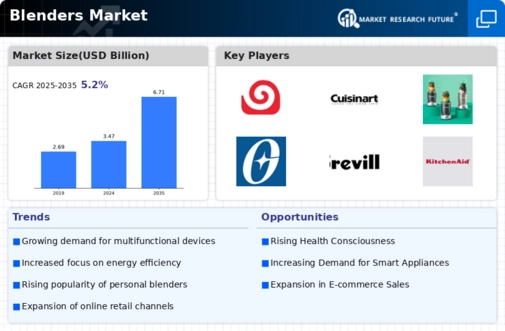Market Trends
Key Emerging Trends in the Blenders Market
The Blenders Market works in a changing and smart kitchen gadget world, affected by many things to meet the different food needs and healthy life choices of people who buy it. A big reason why this market is growing fast is because more and more people want to stay healthy. Blenders help in making food that's good for you, so they are very important too. People want easy and quick ways to mix fruits, vegetables, and other stuff. That's why they always need blenders. The market has many kinds of blenders with different features and designs to match people's likes, needs in the kitchen or lifestyle.
People's likes and food habits are very important in deciding how the blenders market works. As more people care about eating healthy, they want blenders that work well, can do lots of things and are easy to use. They buy these machines for making smoothies at home. The market offers choices like small blenders for making smoothies on the run, powerful ones for expert-style mixing and easy to use models that save space.
The economy greatly affects the blenders market. When people have more money to spend, they might be ready to buy high-quality and techy blender models that do extra things well and last long. On the other hand, when times are tough for businesses and money is tight, people might look for cheaper choices. This shows that there need to be different cost levels in stores so everyone can find something they can afford.
Technology improvements in blender shape and skill help the market grow. Things like strong engines, speed controls you can change, smart phone connections and tough blade parts make blenders better to use. When tech and things you use in the kitchen come together, it leads to blenders that not only mix well but also fit what people want who are looking for quick tools with many uses.
Changing food habits and culture shape the market for blenders. As people's thoughts about eating healthy and making food at home change, companies might adjust what they sell to fit with new tastes in cooking. The mix of things in the market lets many kinds of blenders be made. Some are small and look good for tiny kitchens, while others are strong enough to use by people who really love cooking or baking stuff.
Thinking about safety rules and product quality for blenders is very important in deciding how the market changes. Following the rules makes kitchen machines safe. This includes working engines, secure blades and long-lasting parts so buyers can trust they are using a good tool in their homes without danger.















Leave a Comment